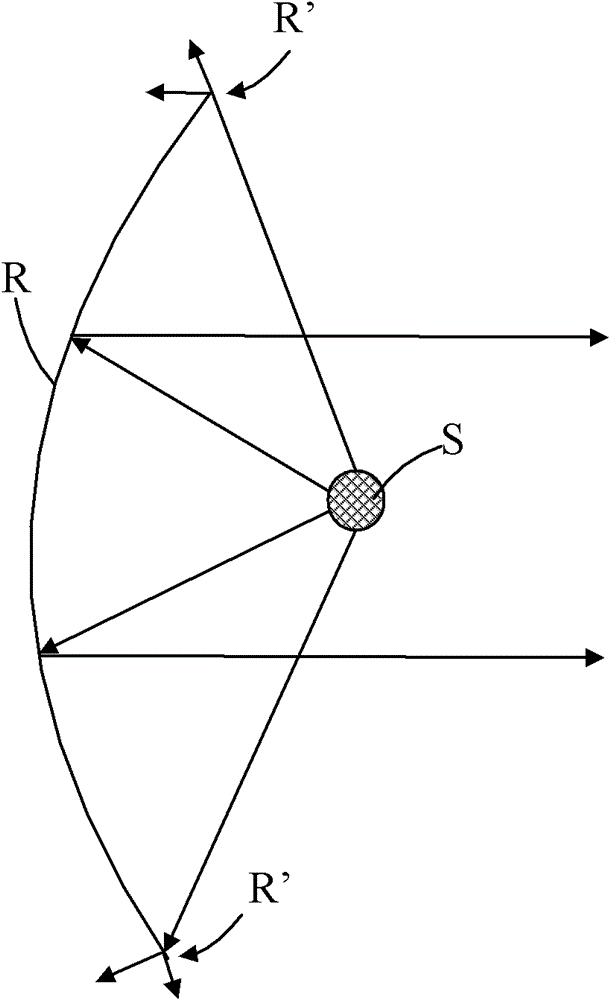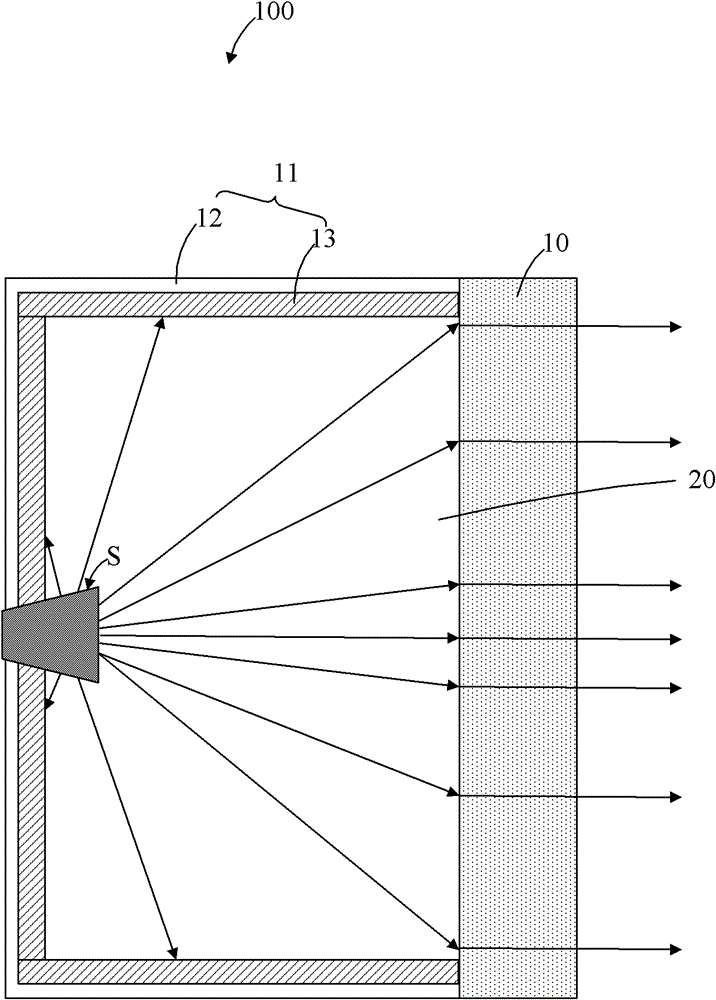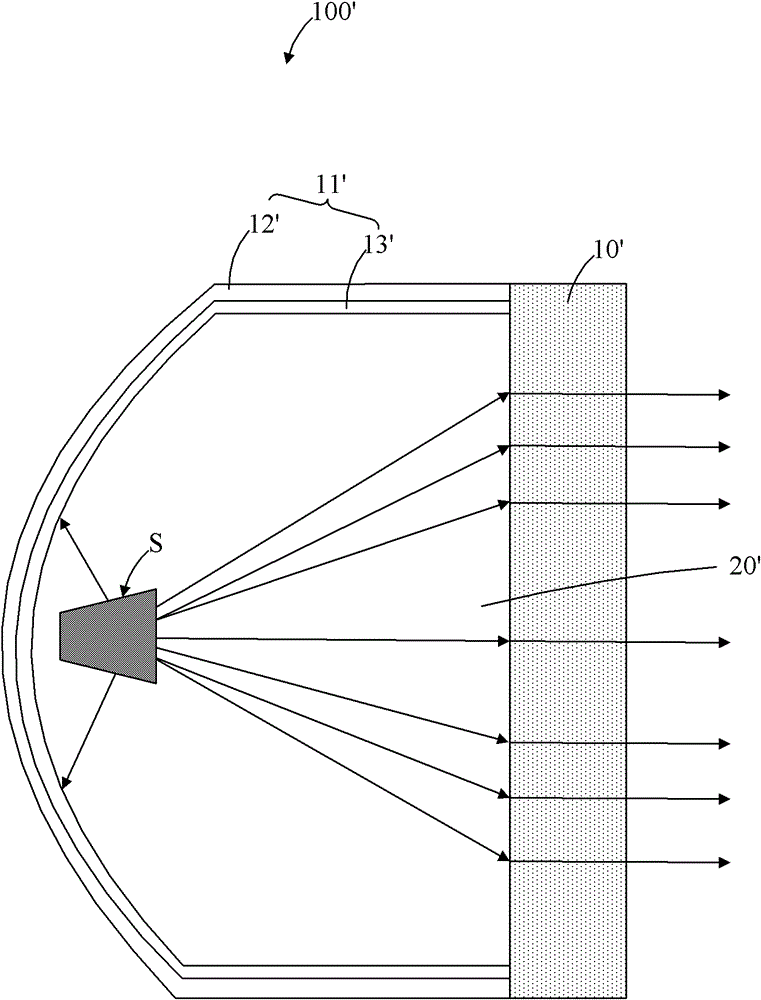Microwave antenna made of metamaterials
A technology of microwave antennas and metamaterials, which is applied in the directions of antennas, electrical components, and radiation unit covers, can solve the problems of increasing the rear lobe and reducing the front-to-back ratio of microwave antennas, so as to reduce electromagnetic waves, increase the front-to-back ratio, and ensure high efficiency. Effect
- Summary
- Abstract
- Description
- Claims
- Application Information
AI Technical Summary
Problems solved by technology
Method used
Image
Examples
Embodiment Construction
[0026] The present invention will be further described below in conjunction with relevant drawings and specific embodiments:
[0027] figure 2 It is a schematic cross-sectional structure diagram of a microwave antenna 100 in an implementation of the present invention, and the microwave antenna 10 includes a feed source S, a metamaterial unit 10 and an antenna cavity 11 . An opening 20 is provided on one side of the antenna cavity 11 , and the metamaterial unit 10 is disposed at the opening 20 to seal the feed source S in the microwave antenna 100 . The antenna cavity 11 includes a shell 12 and a wave absorbing unit 13 , the wave absorbing unit 13 is used to absorb electromagnetic waves and is coated on the inner surface of the shell 12 . In this embodiment, the housing 12 is made of metal material.
[0028] The feed S produces an electromagnetic radiation area in its surrounding space. In the feed pattern, it usually contains two or more lobes. The lobe with the highest rad...
PUM
 Login to View More
Login to View More Abstract
Description
Claims
Application Information
 Login to View More
Login to View More - R&D
- Intellectual Property
- Life Sciences
- Materials
- Tech Scout
- Unparalleled Data Quality
- Higher Quality Content
- 60% Fewer Hallucinations
Browse by: Latest US Patents, China's latest patents, Technical Efficacy Thesaurus, Application Domain, Technology Topic, Popular Technical Reports.
© 2025 PatSnap. All rights reserved.Legal|Privacy policy|Modern Slavery Act Transparency Statement|Sitemap|About US| Contact US: help@patsnap.com



